Secchu Yokota (New York, NY)
Secchu Yokota
199 E 3rd St, New York, NY 10009
212-777-1124
www.secchuyokota.com
Sun 02/25/2024, 02:45p-05:30p
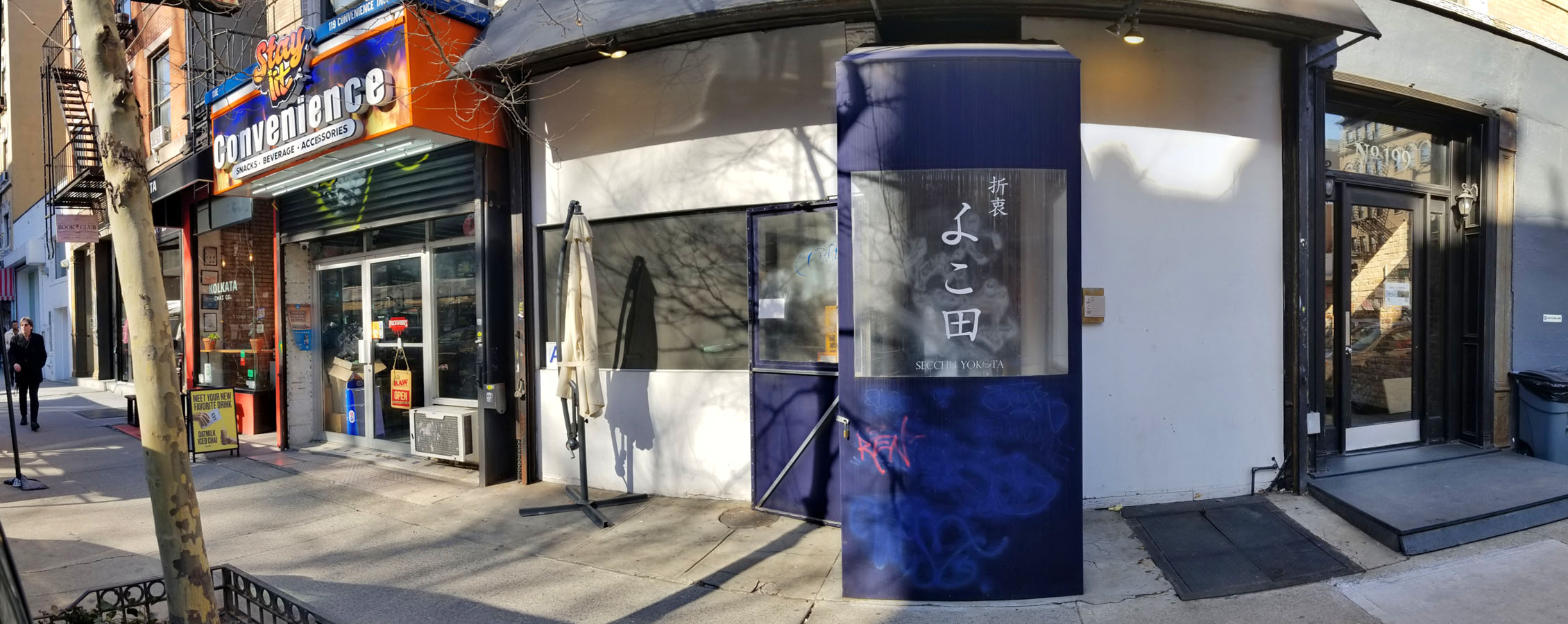
For my final meal of this short trip to Manhattan, I made my way to Alphabet City to pay a visit to Secchu Yokota (折衷よこ田). The creation of Chef/Owner Atsushi Yokota, the restaurant takes its name and inspiration from wayo secchu (和洋折衷), the idea of blending of Japanese and Western traditions. The omakase-style menu is focused on tempura, which, as regular readers will know, I'm quite fond of, hence my strong desire to check this place out.
About the Chef: Yokota Atsushi (横田淳志) was born in January 1965, and grew up in the Kansai region. Both his father and grandfather were chefs--specializing in Western and kaiseki fare, respectively--so unsurprisingly, he got interested in cooking at an early age. He began his culinary career in Japan in 1983, and initially focused on French cuisine. Yokota moved from Osaka to Tokyo (Ginza) to Kobe, and eventually immigrated to the United States in 1998. He first settled in the Philadelphia area, but only stayed there for about a year before relocating to New Jersey/New York.
In NYC, he worked at various establishments, but started making a name for himself at 1 or 8 in Brooklyn, Shinji Mizutani's eclectic Japanese eatery that opened in February 2010. From there, he consulted on okonomiyaki specialist Okiway, also in Brooklyn, which bowed in July 2015. Yokota then got to work on launching his own restaurant, and Secchu Yokota ended up debuting at the start of August 2016. Despite being somewhat obscure and even a bit quirky, the place soon found an audience, and has been chugging along ever since.
As far as I know, Yokota currently runs the kitchen by himself, but he's supported in the front-of-the-house by Ari Shimada (his wife--they married in February 2006) and Daimu Takebayashi (ex-Ippudo), who was the one who largely took care of me during my time at the restaurant.

Secchu Yokota takes over the former East Village home of Meskel, an Ethiopian spot that shuttered in August 2015. It's one of the tiniest restaurants I've been to, with a mere six seats surrounding the kitchen. As for the menu, there was no physical copy provided, but it was priced at $145 a head, or $175 if you opt for a five-ounce serving of Miyazaki wagyu as your concluding shime course (which I did). Beverage-wise, you get about a half-dozen beers and a reasonable selection of sake and wine.
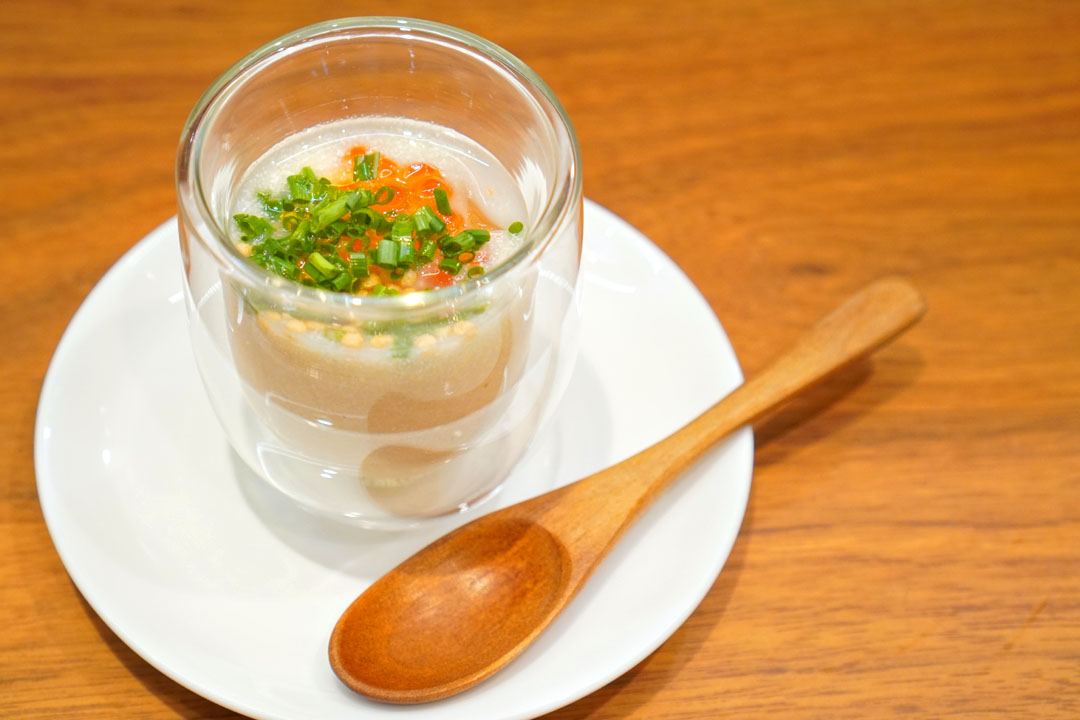
1: Hakusai-Tofu Soup
My meal commenced with a soup quite unlike any other I've had before. I was a fan of the refreshing nature of the napa cabbage, and how that coalesced with the unmistakable umami character of a dashi gelée. Also crucial was the back-and-forth between briny ikura and salty senbei, and I liked how the chives lightened things up. Everything just came together surprisingly well.
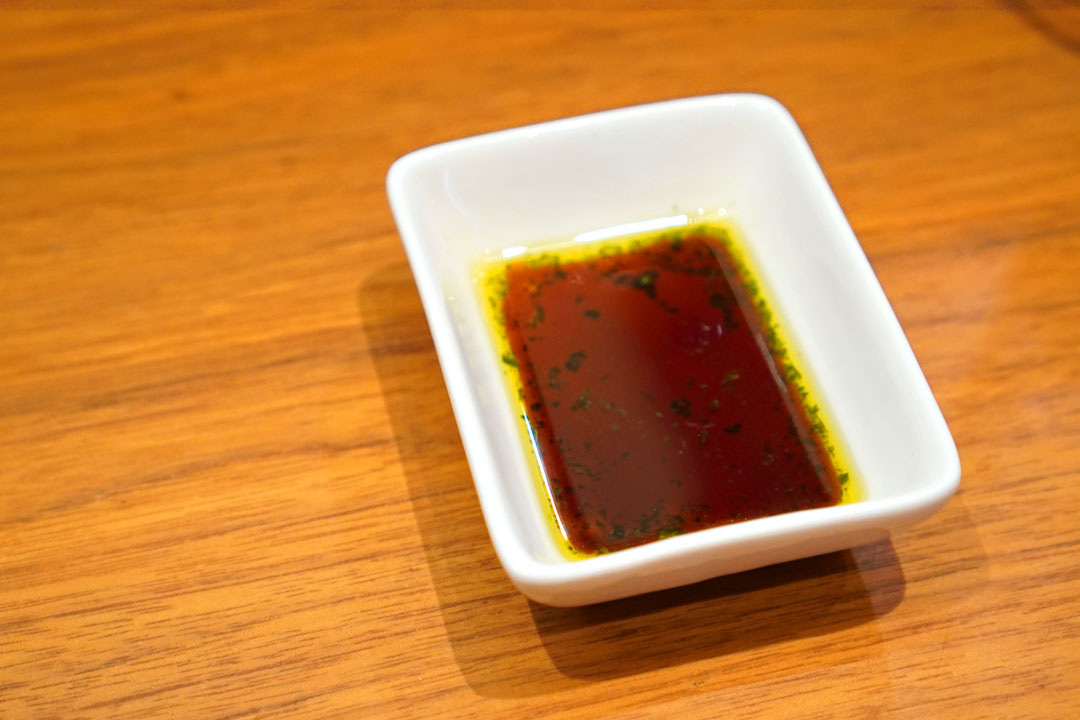
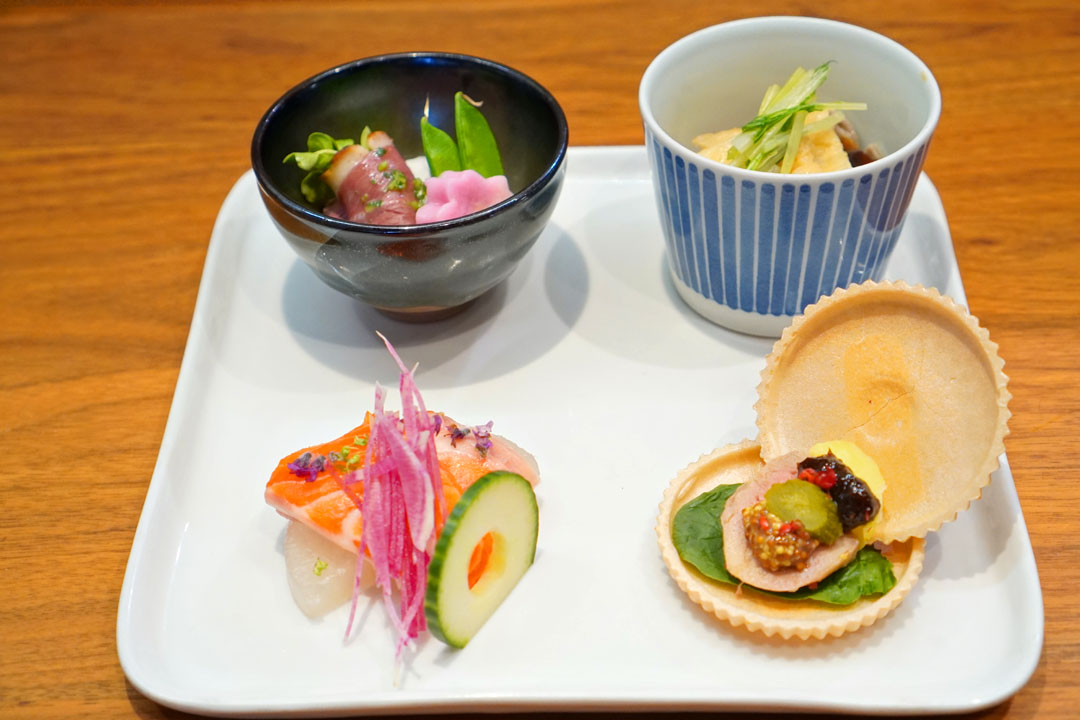
Next was an assortment of four zensai, along with a serving of wasabi oil-boosted soy sauce (for the trout below).

2a: Nijimasu Sashimi
I started with the sashimi. Thick, substantial cuts of steelhead trout (from Upstate New York) ate clean yet fatty, the fish's luscious mouthfeel and taste really taking well to a dab of zippy soy, all while the veggies (simmered daikon, watermelon radish, cucumber, hijiso) helped tone things down.
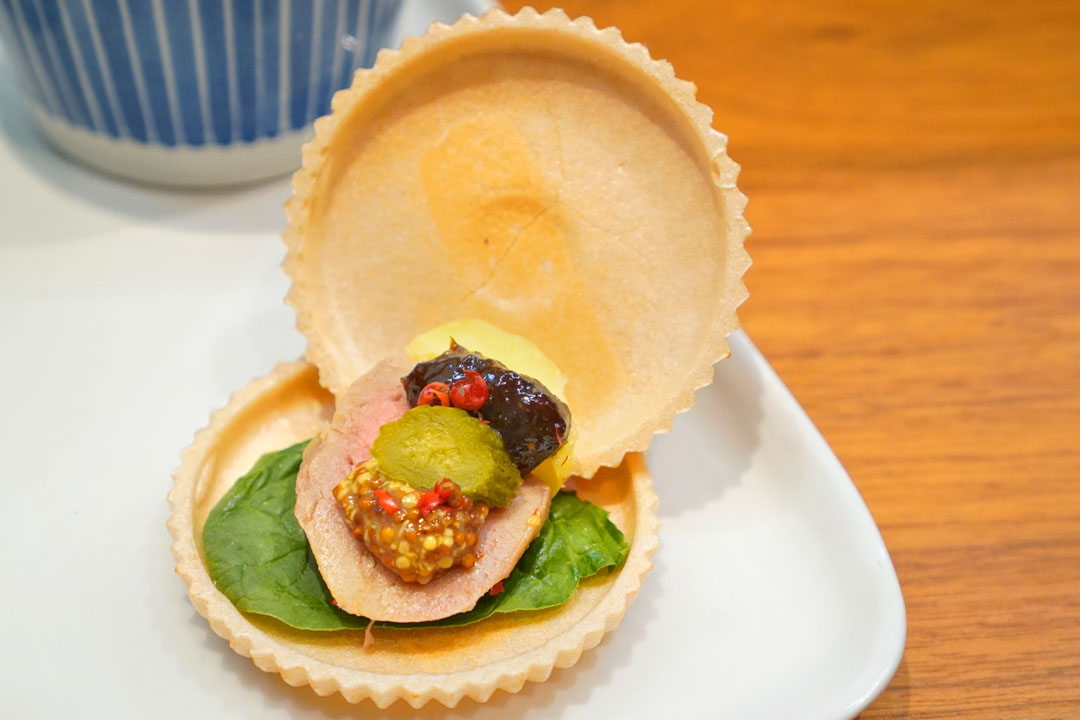
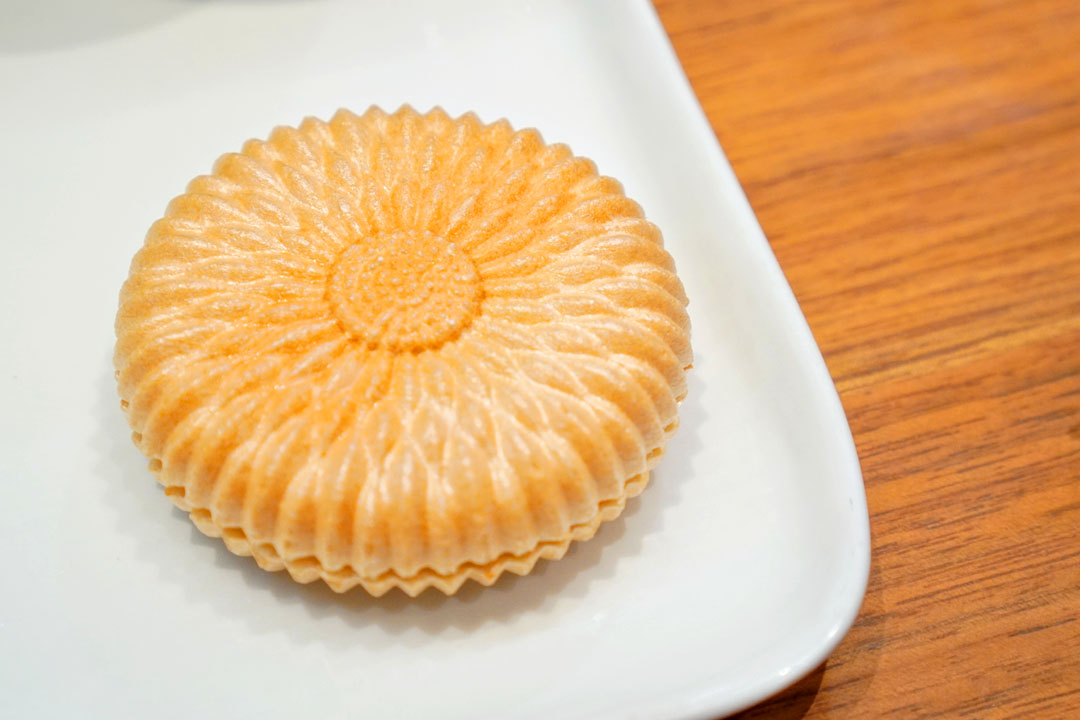
2b: Foie Gras Monaka
I'd had a chicken liver monaka the previous night at Kono, so it seemed fitting to follow that up with a duck liver version. I loved the interplay between that rich, earthy foie--augmented by the sweetness of fig-ginger jam--and the piquancy of the Dijon/cornichon, with the wafers providing a rice cracker-like savoriness to back it all up. Fantastic lingering finish here from the pink peppercorns, too.
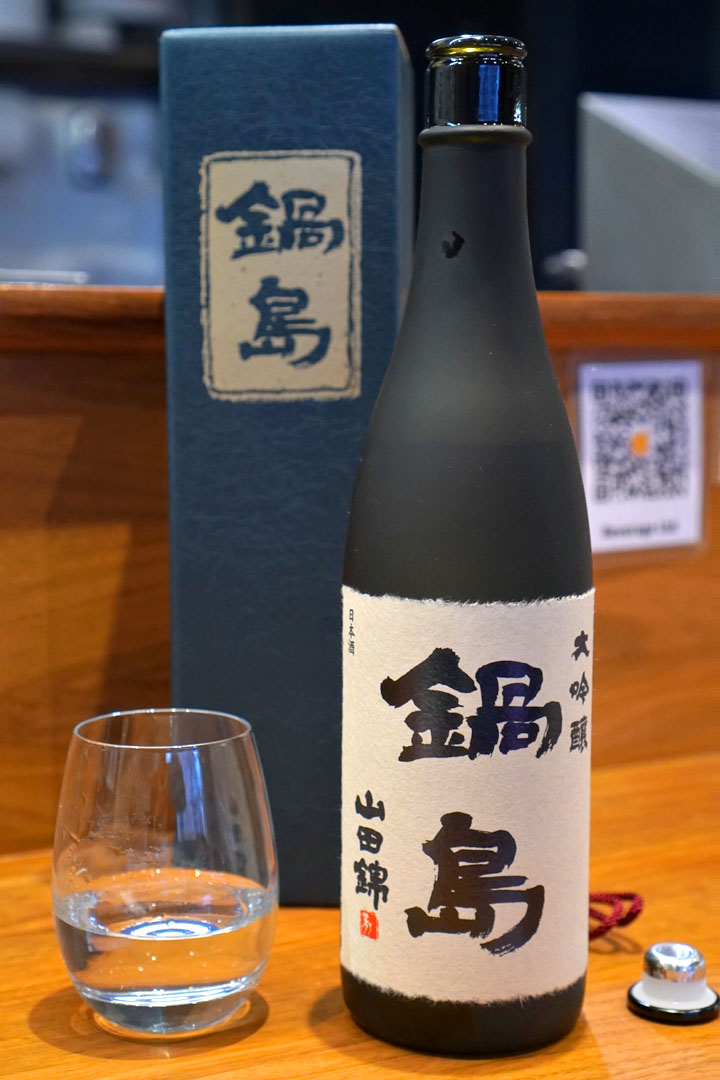
To drink, I went with a bottle of the 鍋島 Nabeshima Daiginjo [$140], from Fukuchiyo Shuzo out of Saga Prefecture. The nose here was all about melon and bubblegum, while the palate was smooth, yet just slightly hot, with orchard fruit flavors accented by smidges of spice. Lovely.
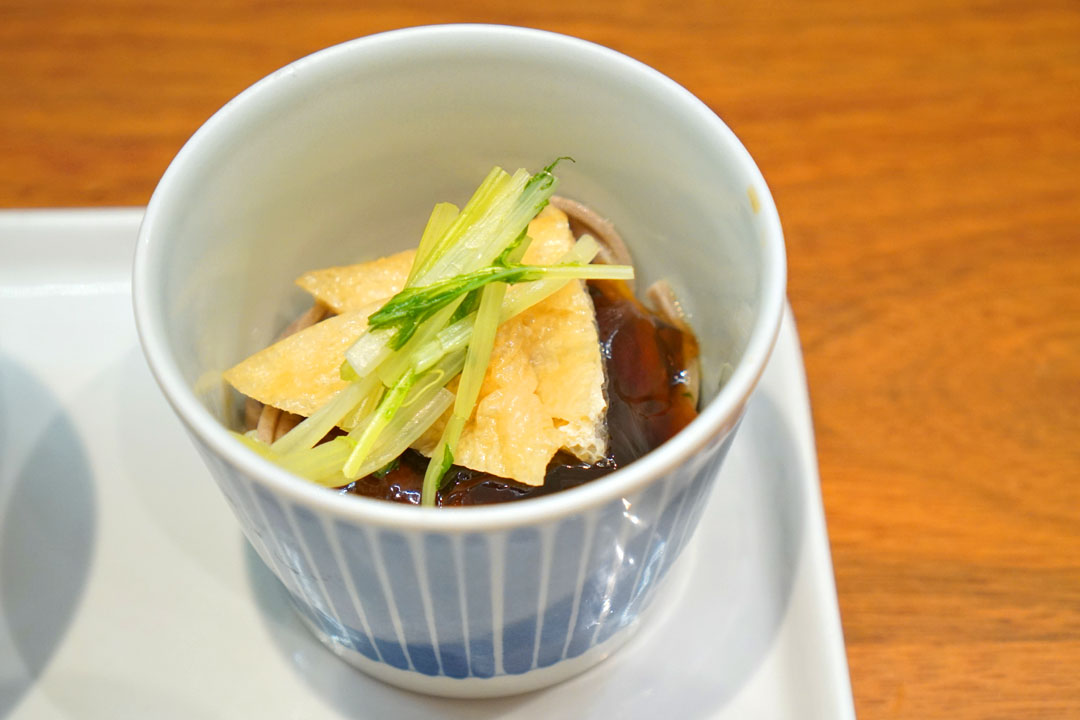
2c: Soba
Chilled buckwheat noodles had just the right amount of firmness, alongside a nutty flavor profile that meshed easily with the dish's umami elements and the kick of chili and wasabi oil. At the same time, the atsu-age (deep-fried tofu) was a welcomed addition, and I appreciated the levity imparted by the mizuna as well.
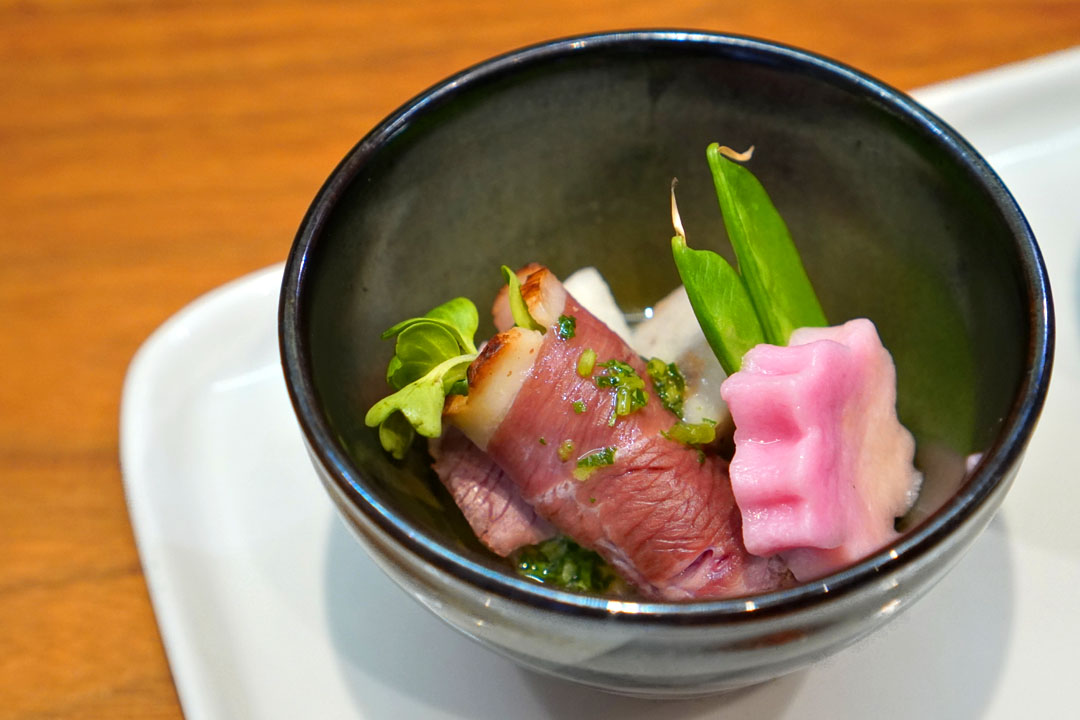
2d: Kamo No Muneniku
Slices of duck breast were a joy to eat, and paired perfectly with the bright, sweet nature of snap peas, not to mention radish and mitsuba. At the same time, I was enamored with the dish's dashi-simmered satoimo base, as well as that chewy bit of what I believe was kamaboko.

It was now time for our parade of tempura to begin, so of course the proper accoutrements were brought out: lemon, roughly grated daikon marinated with shio ponzu, wasabi salt, kelp salt, and tentsuyu.
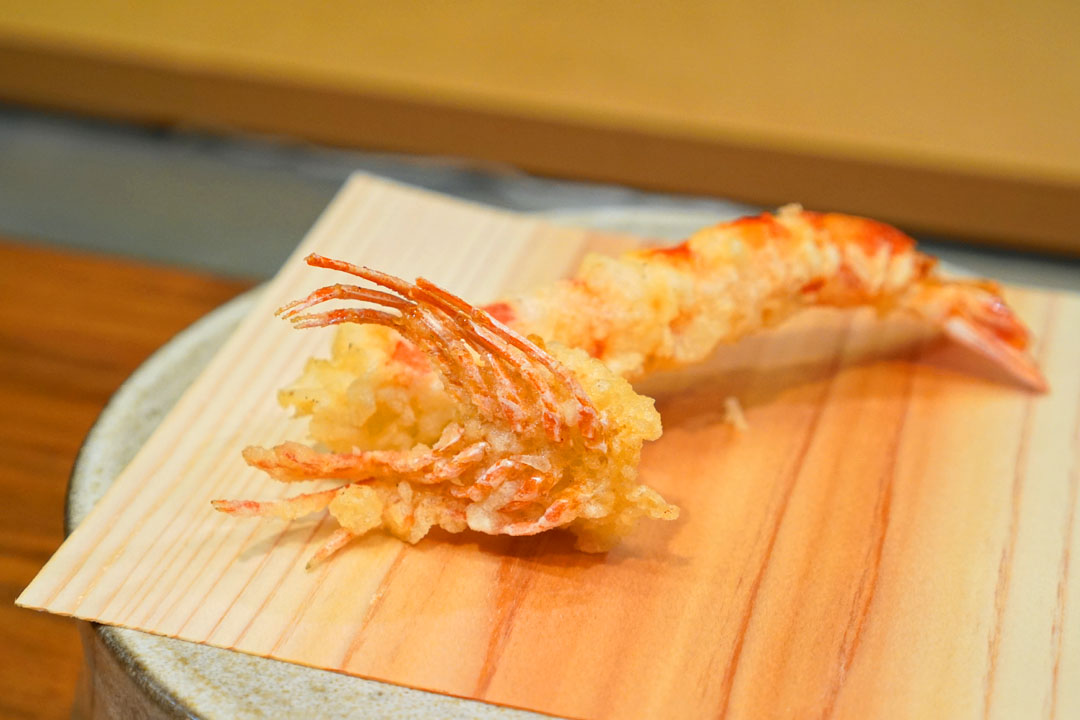
3: Kuruma Ebi & Ebi No Atama
Yokota-san reportedly uses a blend of sesame oil and cottonseed oil for his frying, and he got things started with perhaps the most quintessential of all tempura ingredients. Japanese tiger prawn was served in two forms, and I started with the head, which was wonderfully salty and crunchy, and really married flawlessly with the wasabi salt, which seemed to further draw out its inherent salinity. As for the body, I first enjoyed it by itself, and took a liking to its suppleness and sweetness, punctuated by a lingering brine. The shrimp also linked up well with a hit of umami from the seaweed salt, but was superior with a squirt of lemon.

4: Shishito
Fried shishitos showed off a vegetal, subtly sweet heat, and paired swimmingly with a dab of moshio, while the tentsuyu further amped up the umami factor.
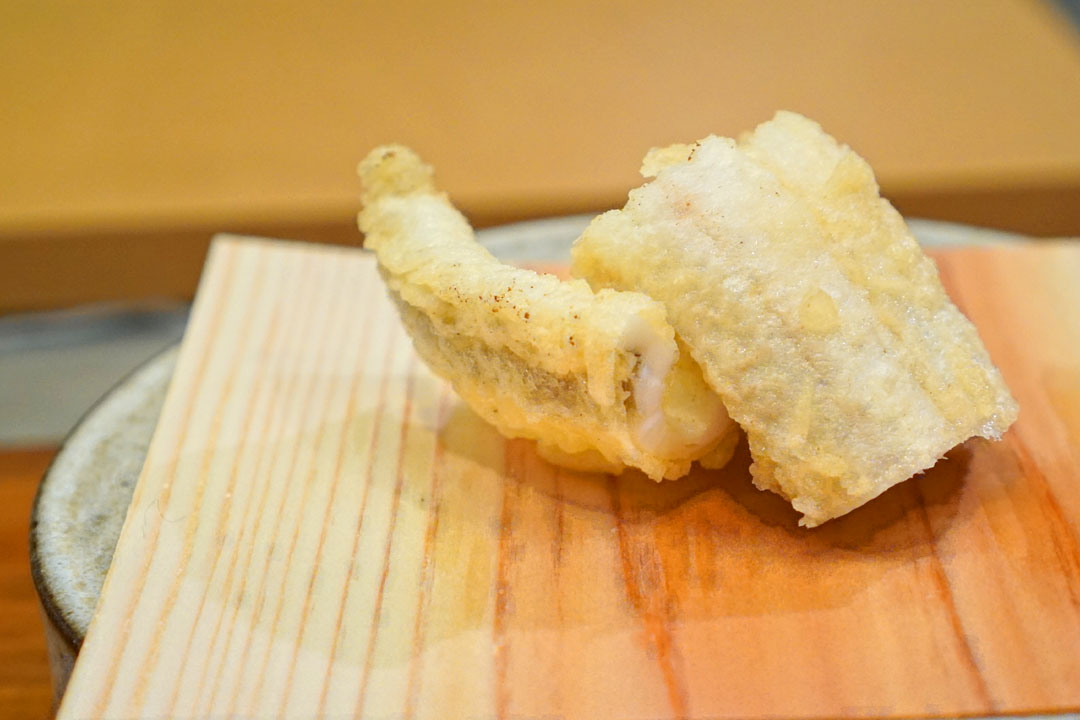
5: Anago
Cuts of sea eel had this wonderfully "springy" consistency, and conveyed a super clean salinity that went great with the tentsuyu, but was even better with the wasabi salt and lemon--an absolutely seamless combination. This is Takebayashi's favorite tempura variety, and I can see why.
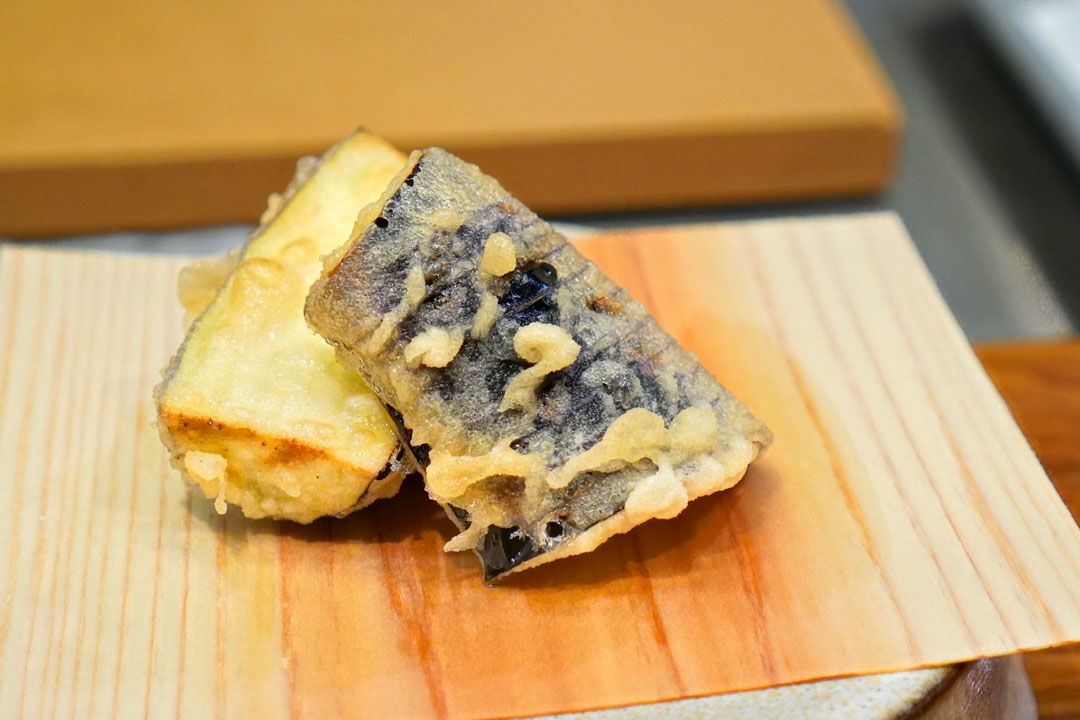
6: Nasu
Eggplant arrived hot and juicy, and really did an admirable job soaking up the savor of the tentsuyu once the veggie was broken up in the bowl.
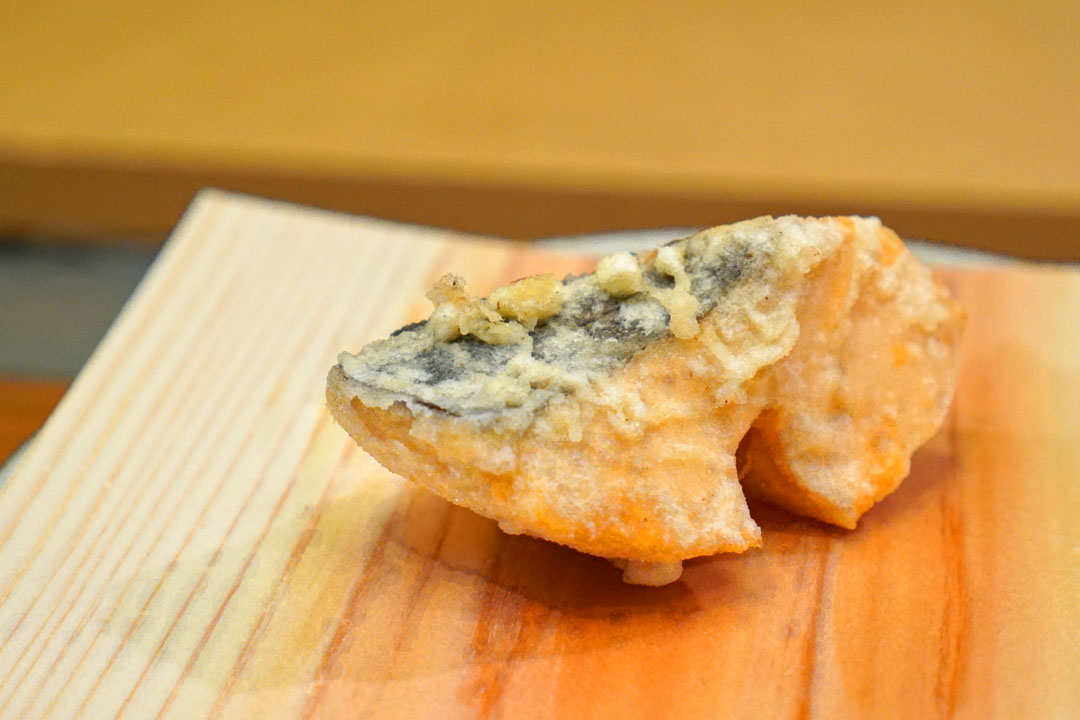
7: Sakura Masu
Sourced from Hokkaido, cherry salmon had this delightfully lush, fatty quality that was only intensified by the wasabi salt. Conversely, the tentsuyu enhanced the fish's intrinsic umami, while the lemon heightened its brine.

8: Renkon
Lotus root was served two ways. The portion in the front was noticeably sweeter, had this "hairy" mouthfeel, and paired superbly with both salts. The more typically-encountered cut in the back, meanwhile, had your classic crunch, and went better with the dipping sauce.
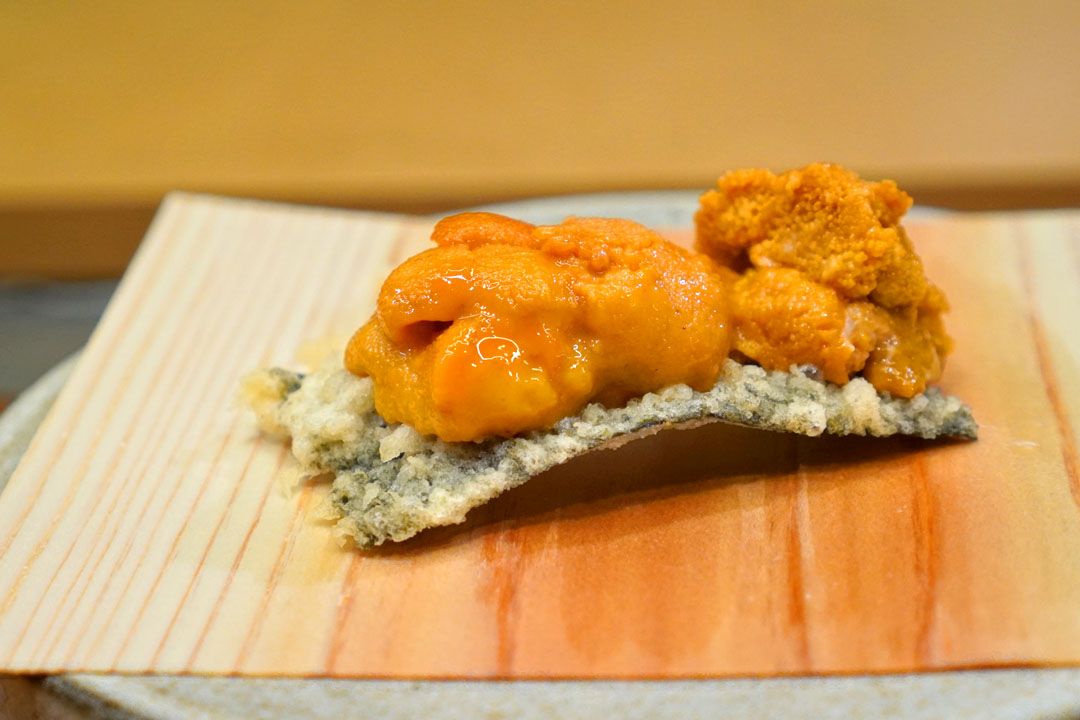
9: Uni Nori
Two types of sea urchin were presented. The Hokkaido had that cool, mineral-driven character that one usually finds with the varietal. On the other hand, the Maine was significantly sweeter and milder, but both matched up well with the lingering savoriness of that crunchy nori seaweed.
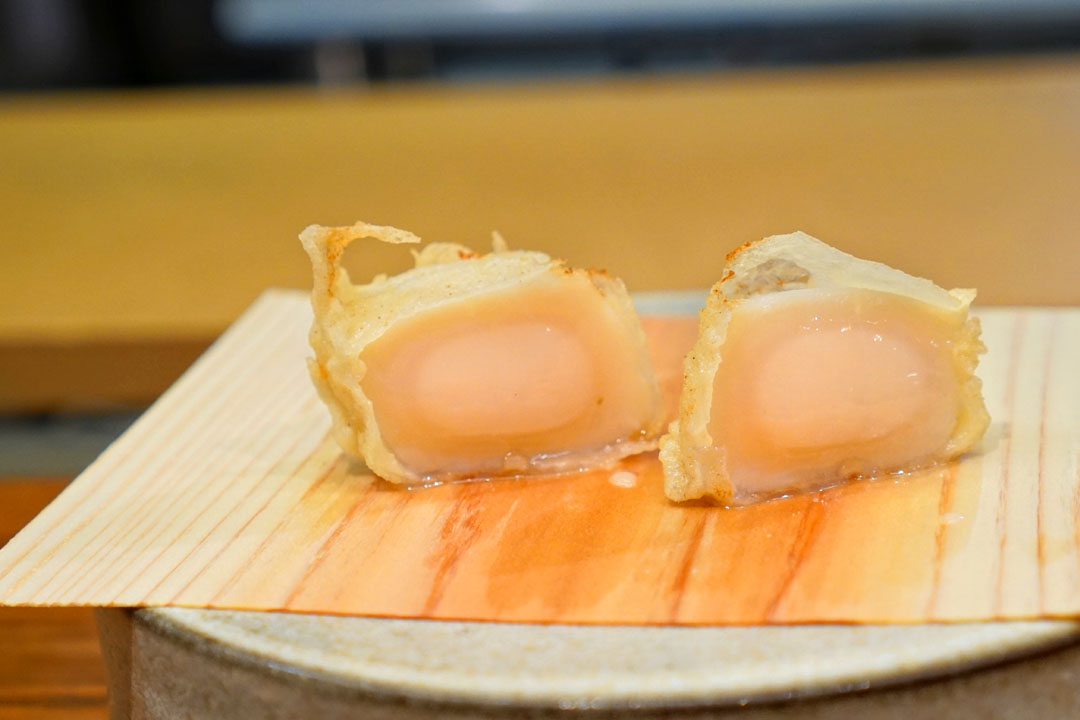
10: Hotate
Hokkaido scallop was a highlight, arriving rare, juicy, and super sweet--wow. The bivalve was delicious alone, but either salt worked to further draw out its sweetness.
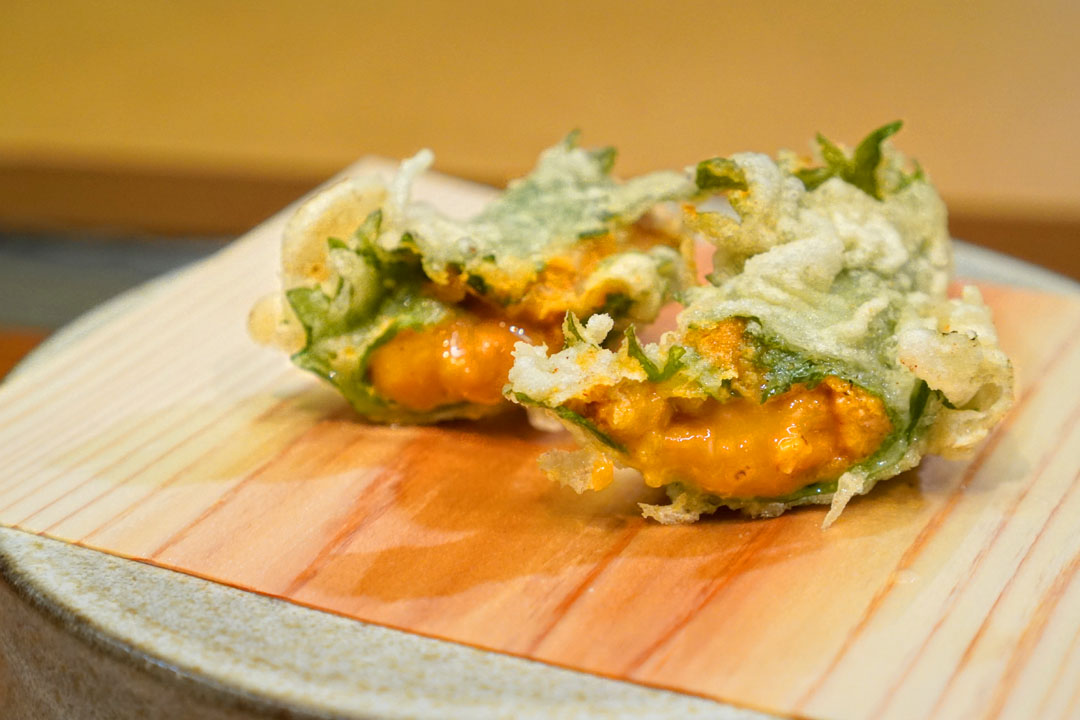
Supplement: Uni Maki [$32.00]
Hokkaido sea urchin made another appearance in this supplemental course, in which the shiso seemed to bring out the roe's natural sweetness. And again, nice textural contrast as well.
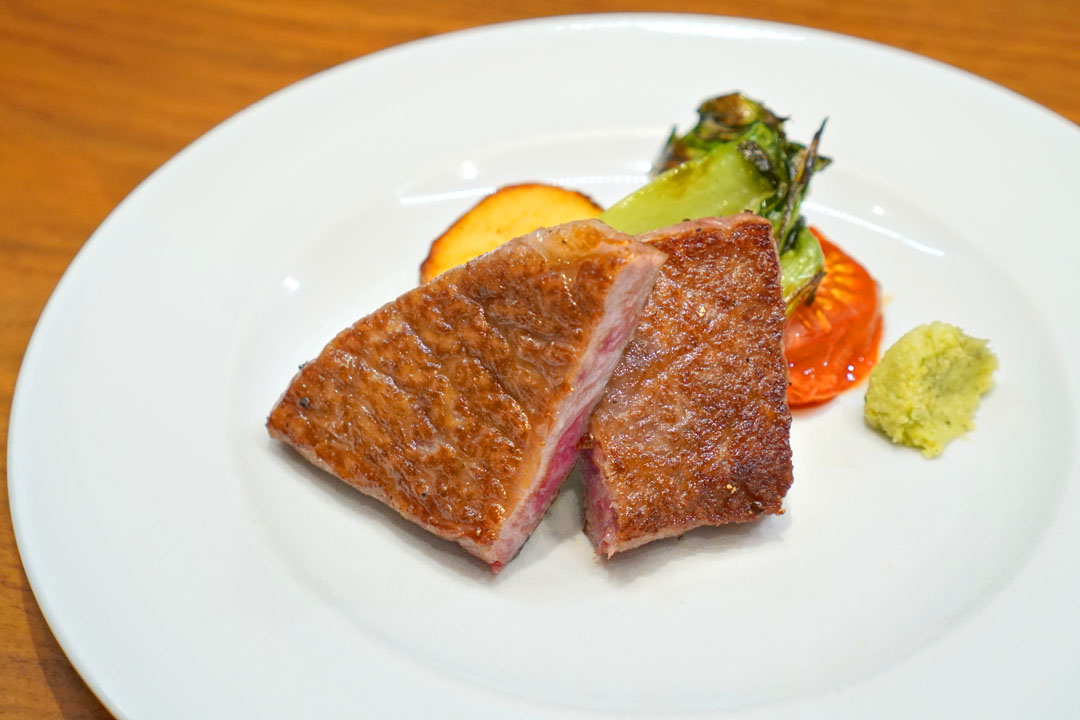
11: A5 Miyazaki Wagyu Sirloin
A5 wagyu showcased just the right amount of sear, and its supple, fatty-yet-finessed character was augmented by a dip into a yuzu-enhanced aged soy, while the wasabi served as a spicy foil to the steak. Further accoutrements of Yukon Gold potato, chingensai (bok choy), and tomato were much appreciated, too.

12: Soba Cha
A soba tea came out hot and roasty, just as I wanted.
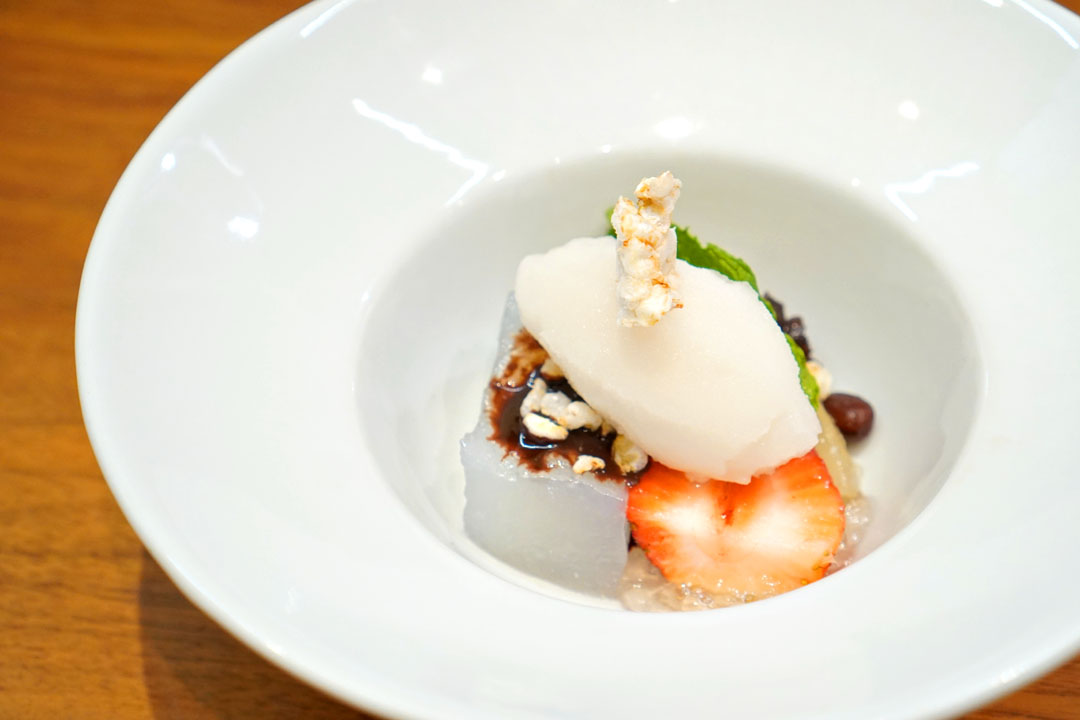
13: Ginger-Cinnamon Sorbet
Dessert comprised a sorbet inspired by a type of candy that the Chef grew up with in Osaka. Its spicy sweetness was accompanied by some nutty bits, springy cubes of kuzumochi, sugary homemade azukian, strawberry, nashi pear compote, and a rich chocolate sauce.
Despite being an under the radar, somewhat unsung spot, Secchu Yokota delivered a superb meal tonight that was basically without any real flaws. Yokota-san was able to show off his personal style of French-inflected Japanese cooking, with spot-on tempura supported by unique dishes that highlighted his Western training. My experience here was quite unlike anything else that I've encountered before, and I have to conclude that this place is a must-try if you're a fellow connoisseur of tempura (or even Japanese food in general).
Given that my dinner at Secchu Yokota was super early, I had plenty of time to kill before my flight back to DC. This afforded me a chance to try Sip & Guzzle, a highly anticipated cocktail bar in West Village that opened back in January this year. The place is the brainchild of fabled bartender Shingo Gokan, in collaboration with Steve Schneider, Ben Yabrow, and Chef Mike Bagale. It's actually a dual-concept spot, with Sip being the fancier experience, while Guzzle is the livelier space, with more familiar cocktails. Now, I wasn't able to get into Sip, but was able to find an opening at Guzzle's bar, so that's what I went with.

Pictured above is the view from my seat.
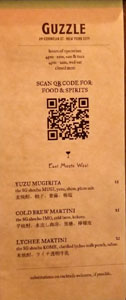

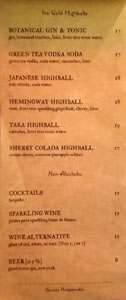
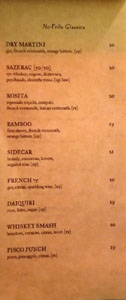

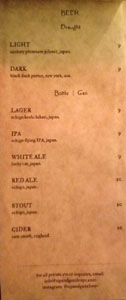
And here we see Guzzle's cocktail list, as well as their selection of wine and beer. Click for larger versions.
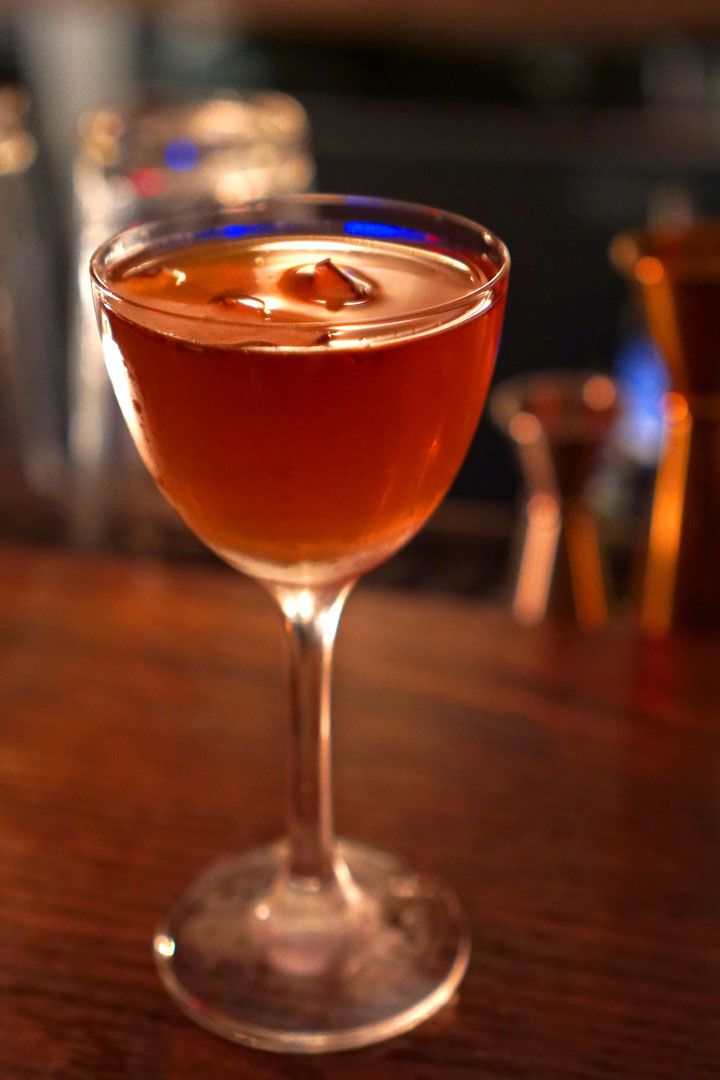
Apple Manhattan [$20.00] | peter luger bacon infused whiskey, super apple blend, bitters.
Given my penchant for Manhattans, the choice for my first cocktail was obvious. The crux here really was that apple, which offered up both a sweetness and a spiciness that blended seamlessly with your classic Manhattan flavors.

Lychee Martini [$21.00] | the SG shochu KOME, clarified lychee milk punch, saline.
A cocktail that I generally consider pedestrian, the lychee martini was given new life thanks to the team here. The key was how restrained the lychee's floral sweetness was presented, set against a yuzu-like tartness and a saline spine, with the foam tempering all the flavors at play.
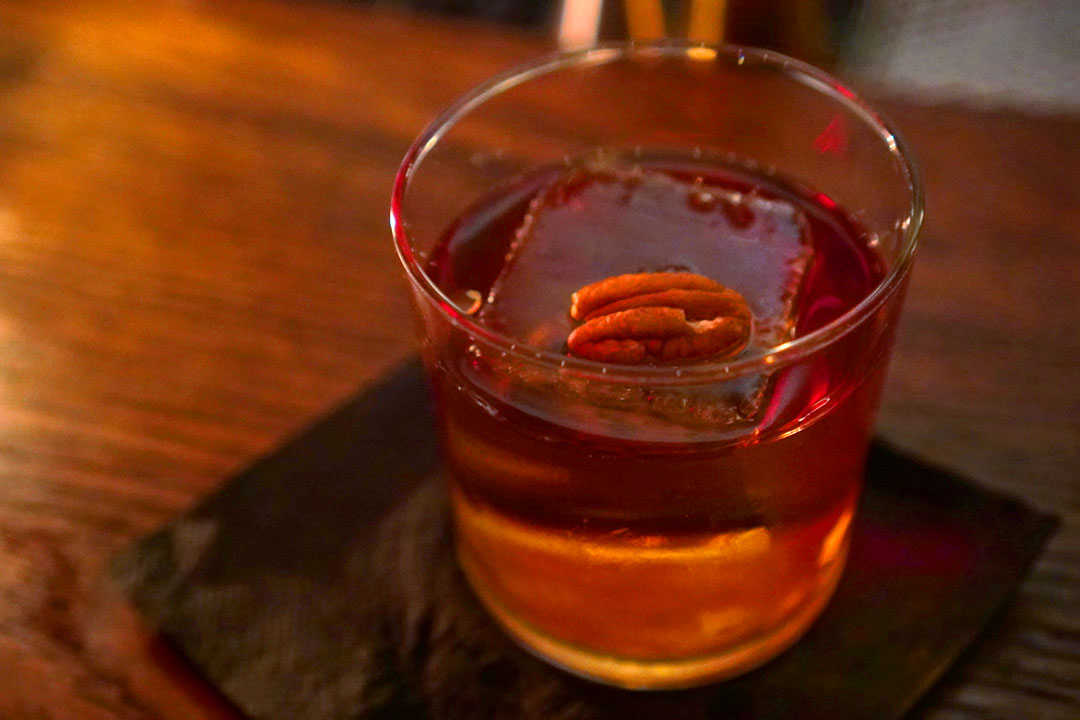
Pecan Old Fashioned [$20.00] | bourbon, pecan, nocello, caramel, px sherry, bitters.
I'm generally a proponent of nutty flavors in my cocktails, and that was certainly the case here. The pecan and walnut paired beautifully, and combined like clockwork with the sweetness of both caramel and Pedro Ximénez, all while the bitters helped even things out.
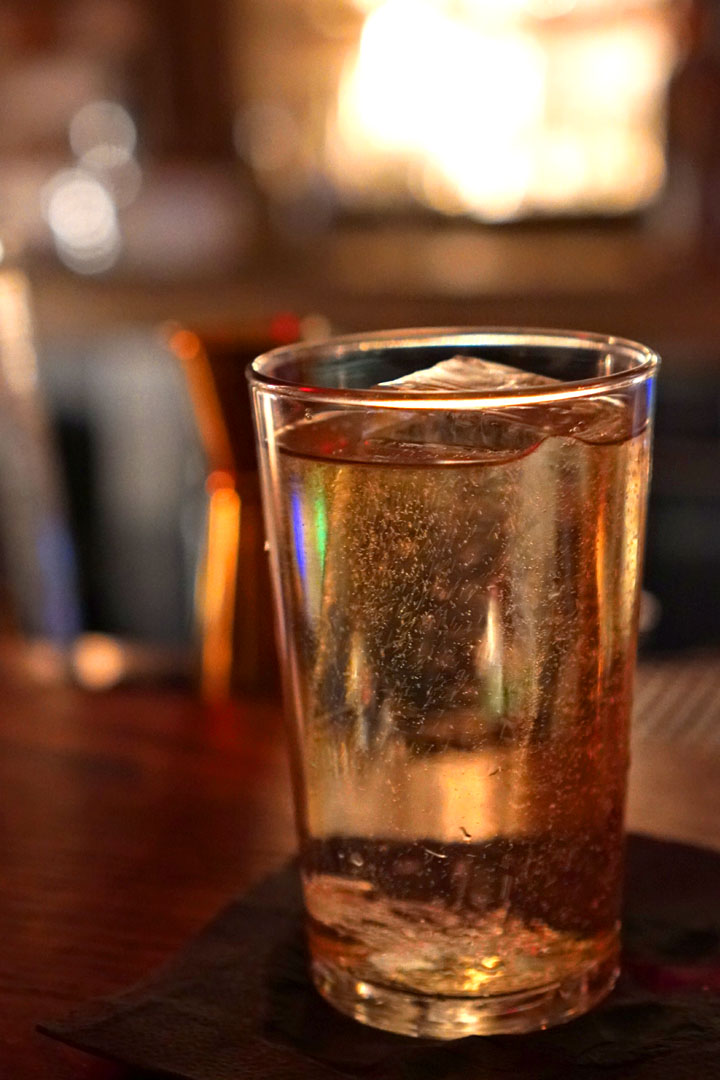
Taka Highball [$19.00] | calvados, fever tree tonic water.
I opted to end with a lighter cocktail, hence this highball. Think overtly apple-y and refreshing, but with a decidedly boozy backbone that lent the necessary gravitas to the drink.
199 E 3rd St, New York, NY 10009
212-777-1124
www.secchuyokota.com
Sun 02/25/2024, 02:45p-05:30p

For my final meal of this short trip to Manhattan, I made my way to Alphabet City to pay a visit to Secchu Yokota (折衷よこ田). The creation of Chef/Owner Atsushi Yokota, the restaurant takes its name and inspiration from wayo secchu (和洋折衷), the idea of blending of Japanese and Western traditions. The omakase-style menu is focused on tempura, which, as regular readers will know, I'm quite fond of, hence my strong desire to check this place out.
About the Chef: Yokota Atsushi (横田淳志) was born in January 1965, and grew up in the Kansai region. Both his father and grandfather were chefs--specializing in Western and kaiseki fare, respectively--so unsurprisingly, he got interested in cooking at an early age. He began his culinary career in Japan in 1983, and initially focused on French cuisine. Yokota moved from Osaka to Tokyo (Ginza) to Kobe, and eventually immigrated to the United States in 1998. He first settled in the Philadelphia area, but only stayed there for about a year before relocating to New Jersey/New York.
In NYC, he worked at various establishments, but started making a name for himself at 1 or 8 in Brooklyn, Shinji Mizutani's eclectic Japanese eatery that opened in February 2010. From there, he consulted on okonomiyaki specialist Okiway, also in Brooklyn, which bowed in July 2015. Yokota then got to work on launching his own restaurant, and Secchu Yokota ended up debuting at the start of August 2016. Despite being somewhat obscure and even a bit quirky, the place soon found an audience, and has been chugging along ever since.
As far as I know, Yokota currently runs the kitchen by himself, but he's supported in the front-of-the-house by Ari Shimada (his wife--they married in February 2006) and Daimu Takebayashi (ex-Ippudo), who was the one who largely took care of me during my time at the restaurant.

Secchu Yokota takes over the former East Village home of Meskel, an Ethiopian spot that shuttered in August 2015. It's one of the tiniest restaurants I've been to, with a mere six seats surrounding the kitchen. As for the menu, there was no physical copy provided, but it was priced at $145 a head, or $175 if you opt for a five-ounce serving of Miyazaki wagyu as your concluding shime course (which I did). Beverage-wise, you get about a half-dozen beers and a reasonable selection of sake and wine.

1: Hakusai-Tofu Soup
My meal commenced with a soup quite unlike any other I've had before. I was a fan of the refreshing nature of the napa cabbage, and how that coalesced with the unmistakable umami character of a dashi gelée. Also crucial was the back-and-forth between briny ikura and salty senbei, and I liked how the chives lightened things up. Everything just came together surprisingly well.


Next was an assortment of four zensai, along with a serving of wasabi oil-boosted soy sauce (for the trout below).

2a: Nijimasu Sashimi
I started with the sashimi. Thick, substantial cuts of steelhead trout (from Upstate New York) ate clean yet fatty, the fish's luscious mouthfeel and taste really taking well to a dab of zippy soy, all while the veggies (simmered daikon, watermelon radish, cucumber, hijiso) helped tone things down.


2b: Foie Gras Monaka
I'd had a chicken liver monaka the previous night at Kono, so it seemed fitting to follow that up with a duck liver version. I loved the interplay between that rich, earthy foie--augmented by the sweetness of fig-ginger jam--and the piquancy of the Dijon/cornichon, with the wafers providing a rice cracker-like savoriness to back it all up. Fantastic lingering finish here from the pink peppercorns, too.

To drink, I went with a bottle of the 鍋島 Nabeshima Daiginjo [$140], from Fukuchiyo Shuzo out of Saga Prefecture. The nose here was all about melon and bubblegum, while the palate was smooth, yet just slightly hot, with orchard fruit flavors accented by smidges of spice. Lovely.

2c: Soba
Chilled buckwheat noodles had just the right amount of firmness, alongside a nutty flavor profile that meshed easily with the dish's umami elements and the kick of chili and wasabi oil. At the same time, the atsu-age (deep-fried tofu) was a welcomed addition, and I appreciated the levity imparted by the mizuna as well.

2d: Kamo No Muneniku
Slices of duck breast were a joy to eat, and paired perfectly with the bright, sweet nature of snap peas, not to mention radish and mitsuba. At the same time, I was enamored with the dish's dashi-simmered satoimo base, as well as that chewy bit of what I believe was kamaboko.

It was now time for our parade of tempura to begin, so of course the proper accoutrements were brought out: lemon, roughly grated daikon marinated with shio ponzu, wasabi salt, kelp salt, and tentsuyu.

3: Kuruma Ebi & Ebi No Atama
Yokota-san reportedly uses a blend of sesame oil and cottonseed oil for his frying, and he got things started with perhaps the most quintessential of all tempura ingredients. Japanese tiger prawn was served in two forms, and I started with the head, which was wonderfully salty and crunchy, and really married flawlessly with the wasabi salt, which seemed to further draw out its inherent salinity. As for the body, I first enjoyed it by itself, and took a liking to its suppleness and sweetness, punctuated by a lingering brine. The shrimp also linked up well with a hit of umami from the seaweed salt, but was superior with a squirt of lemon.

4: Shishito
Fried shishitos showed off a vegetal, subtly sweet heat, and paired swimmingly with a dab of moshio, while the tentsuyu further amped up the umami factor.

5: Anago
Cuts of sea eel had this wonderfully "springy" consistency, and conveyed a super clean salinity that went great with the tentsuyu, but was even better with the wasabi salt and lemon--an absolutely seamless combination. This is Takebayashi's favorite tempura variety, and I can see why.

6: Nasu
Eggplant arrived hot and juicy, and really did an admirable job soaking up the savor of the tentsuyu once the veggie was broken up in the bowl.

7: Sakura Masu
Sourced from Hokkaido, cherry salmon had this delightfully lush, fatty quality that was only intensified by the wasabi salt. Conversely, the tentsuyu enhanced the fish's intrinsic umami, while the lemon heightened its brine.

8: Renkon
Lotus root was served two ways. The portion in the front was noticeably sweeter, had this "hairy" mouthfeel, and paired superbly with both salts. The more typically-encountered cut in the back, meanwhile, had your classic crunch, and went better with the dipping sauce.

9: Uni Nori
Two types of sea urchin were presented. The Hokkaido had that cool, mineral-driven character that one usually finds with the varietal. On the other hand, the Maine was significantly sweeter and milder, but both matched up well with the lingering savoriness of that crunchy nori seaweed.

10: Hotate
Hokkaido scallop was a highlight, arriving rare, juicy, and super sweet--wow. The bivalve was delicious alone, but either salt worked to further draw out its sweetness.

Supplement: Uni Maki [$32.00]
Hokkaido sea urchin made another appearance in this supplemental course, in which the shiso seemed to bring out the roe's natural sweetness. And again, nice textural contrast as well.

11: A5 Miyazaki Wagyu Sirloin
A5 wagyu showcased just the right amount of sear, and its supple, fatty-yet-finessed character was augmented by a dip into a yuzu-enhanced aged soy, while the wasabi served as a spicy foil to the steak. Further accoutrements of Yukon Gold potato, chingensai (bok choy), and tomato were much appreciated, too.

12: Soba Cha
A soba tea came out hot and roasty, just as I wanted.

13: Ginger-Cinnamon Sorbet
Dessert comprised a sorbet inspired by a type of candy that the Chef grew up with in Osaka. Its spicy sweetness was accompanied by some nutty bits, springy cubes of kuzumochi, sugary homemade azukian, strawberry, nashi pear compote, and a rich chocolate sauce.
Despite being an under the radar, somewhat unsung spot, Secchu Yokota delivered a superb meal tonight that was basically without any real flaws. Yokota-san was able to show off his personal style of French-inflected Japanese cooking, with spot-on tempura supported by unique dishes that highlighted his Western training. My experience here was quite unlike anything else that I've encountered before, and I have to conclude that this place is a must-try if you're a fellow connoisseur of tempura (or even Japanese food in general).
Given that my dinner at Secchu Yokota was super early, I had plenty of time to kill before my flight back to DC. This afforded me a chance to try Sip & Guzzle, a highly anticipated cocktail bar in West Village that opened back in January this year. The place is the brainchild of fabled bartender Shingo Gokan, in collaboration with Steve Schneider, Ben Yabrow, and Chef Mike Bagale. It's actually a dual-concept spot, with Sip being the fancier experience, while Guzzle is the livelier space, with more familiar cocktails. Now, I wasn't able to get into Sip, but was able to find an opening at Guzzle's bar, so that's what I went with.

Pictured above is the view from my seat.






And here we see Guzzle's cocktail list, as well as their selection of wine and beer. Click for larger versions.

Apple Manhattan [$20.00] | peter luger bacon infused whiskey, super apple blend, bitters.
Given my penchant for Manhattans, the choice for my first cocktail was obvious. The crux here really was that apple, which offered up both a sweetness and a spiciness that blended seamlessly with your classic Manhattan flavors.

Lychee Martini [$21.00] | the SG shochu KOME, clarified lychee milk punch, saline.
A cocktail that I generally consider pedestrian, the lychee martini was given new life thanks to the team here. The key was how restrained the lychee's floral sweetness was presented, set against a yuzu-like tartness and a saline spine, with the foam tempering all the flavors at play.

Pecan Old Fashioned [$20.00] | bourbon, pecan, nocello, caramel, px sherry, bitters.
I'm generally a proponent of nutty flavors in my cocktails, and that was certainly the case here. The pecan and walnut paired beautifully, and combined like clockwork with the sweetness of both caramel and Pedro Ximénez, all while the bitters helped even things out.

Taka Highball [$19.00] | calvados, fever tree tonic water.
I opted to end with a lighter cocktail, hence this highball. Think overtly apple-y and refreshing, but with a decidedly boozy backbone that lent the necessary gravitas to the drink.
0 Comments:
Post a Comment
Subscribe to Post Comments [Atom]
<< Home